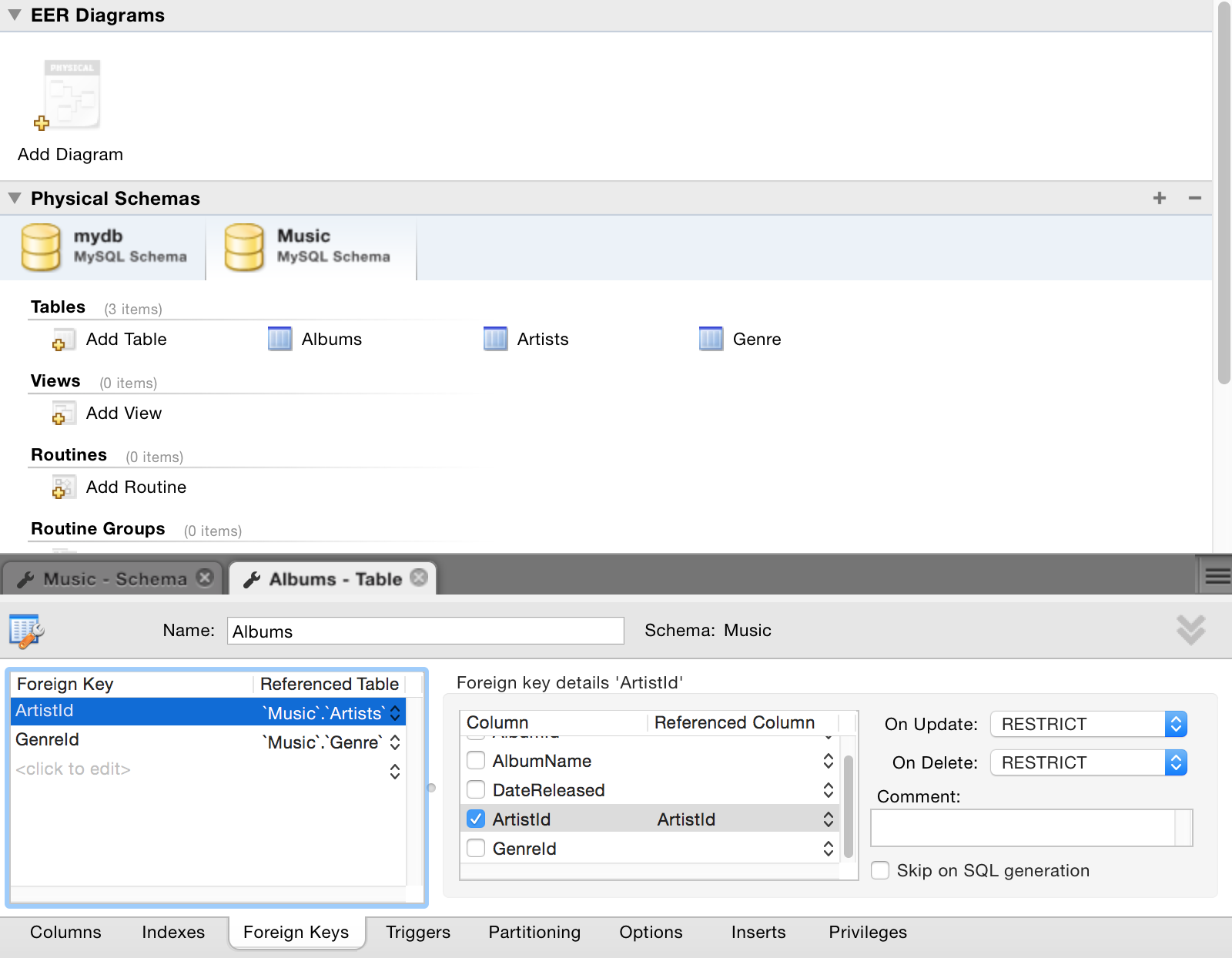

Mysql> CREATE USER IDENTIFIED BY PASSWORD '*xxxxxxxxxx' I would then go to the new instance, copy the above SQL statement, and issue the CREATE USER command using the HASH value of the password, and then issue the same “GRANT SELECT,…” statement – but without the IDENTIFIED BY PASSWORD part of the command. | GRANT SELECT, INSERT, UPDATE, DELETE, CREATE TABLESPACE ON *.* TO IDENTIFIED BY PASSWORD '*xxxxxxxxxx' | Normally, to duplicate a user, I start by taking a look at the privileges that this user has by issuing a “ SHOW GRANTS” statement, like this: The user that I wanted to copy from the master to the slave was named “WebUser”. With the mysqluserclone script, it was fairly easy. I recently created a new MySQL replication slave instance on a new server, and I needed a way to copy a few of the users from the master database over to the slave database.
#Create user mysql workbench install#
You will also need to install Python and to make sure that your execution $PATH’s are set correctly. If you don’t have Workbench, you may download the MySQL Utility scripts from. They are designed to work with Python 2.x greater than 2.6. The utilities are written in Python, available under the GPLv2 license, and are extendable using the supplied library. MySQL Utilities are a part MySQL Workbench. This post is one in a series that I will be doing on MySQL Workbench Utilities – Administer MySQL with Python Scripts.


 0 kommentar(er)
0 kommentar(er)
